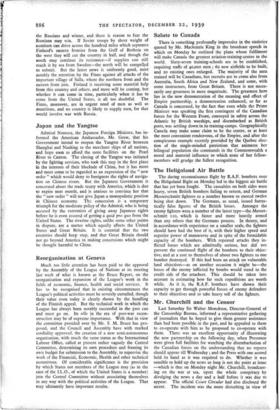The Heligoland Air Battle
The daring reconnaissance flight by R.A.F. bombers over the Heligoland Bight on Monday led to the biggest air battle that has yet been fought. The casualties on both sides were heavy, seven British bombers failing to return, and German Messerschmitt fighters to a number known to exceed twelve being shot down. The Germans, as usual, issued fantas- tically false figures of the British losses. Amongst the enemy fighters were a number of the latest type—the Messer- schmitt I to, which is faster and more heavily armed than any others that the Germans possess. In theory, and in accordance with experience on a smaller scale, the fighters should have had the best of it, with their higher speed and superior power of manoeuvre and in spite of the formidable capacity of the bombers. With repeated attacks they in- flicted losses which are admittedly serious, but did not prevent the continued flight of the bombers to their objec- tive, and at a cost to themselves of about two fighters to one bomber destroyed. If this had been an attack on vulnerable land objectives—as on another occasion it might be—the losses of the enemy inflicted by bombs would stand to the credit side of the attackers. This should be taken into account in estimating how far such expeditions are worth while. As it is, the R.A.F. bombers have shown their capacity to get through powerful forces of enemy defenders to their objectives and to take heavy toll of the fighters.




































 Previous page
Previous page